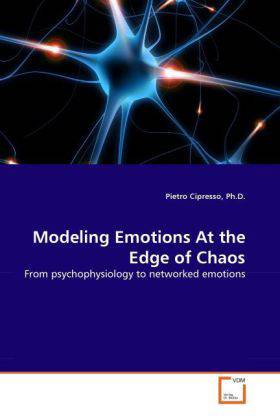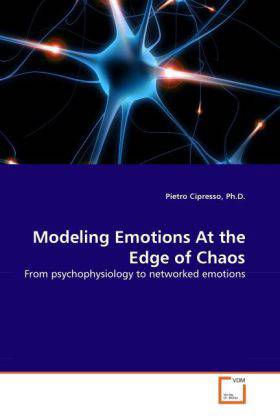
- Afhalen na 1 uur in een winkel met voorraad
- Gratis thuislevering in België vanaf € 30
- Ruim aanbod met 7 miljoen producten
- Afhalen na 1 uur in een winkel met voorraad
- Gratis thuislevering in België vanaf € 30
- Ruim aanbod met 7 miljoen producten
Zoeken
Omschrijving
The edge of chaos is a metaphor used to describe the complexity that lies between systems that are too static and systems that are too chaotic. The science of complex systems is the best paradigm to use for describing and modeling behavioral and emotional aspects from both a mathematical and a psychological point of view. Today, emotions are often better understood by means of psychophysiological correlates. By measuring affective states in human beings, it is possible to create simple rules and assign these to specific behaviors. Coding such rules makes it easier to study interactions by using simulated networks to evaluate the diffusion and the dynamics of strategic and behavioral aspects. Modeling emotions is surely interesting, but also practical. We need to understand how emotions affect human behavior and precisely how to endow artificial agents to follow such rules. With these important issues in mind, "Modeling Emotions At the Edge of Chaos" explores psychology, the complexity of emotions, and other aspects related to human behavior and helps us represent them in a formal, computational, and usable mode.
Specificaties
Betrokkenen
- Auteur(s):
- Uitgeverij:
Inhoud
- Aantal bladzijden:
- 204
- Taal:
- Engels
Eigenschappen
- Productcode (EAN):
- 9783639301694
- Verschijningsdatum:
- 14/11/2010
- Uitvoering:
- Paperback
- Formaat:
- Trade paperback (VS)
- Afmetingen:
- 152 mm x 229 mm
- Gewicht:
- 303 g

Alleen bij Standaard Boekhandel
+ 155 punten op je klantenkaart van Standaard Boekhandel
Beoordelingen
We publiceren alleen reviews die voldoen aan de voorwaarden voor reviews. Bekijk onze voorwaarden voor reviews.











